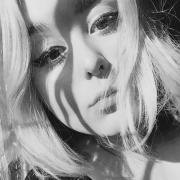HERSTORY, THEIRSTORY
My mother had a father who wouldn’t let her go to art school; he called her the ‘mad artist’. My grandmother told her not to let others’ ignorance hinder her, and taught her to be resilient. My mother had a husband who said she was worthless, one day he threw her around like a ragdoll, then one day was most days. I had a father who said the only value I would ever have relied on whether or not a man found me appealing. My mother taught me how to love myself in the face of fabrications. My mother is an artist even though she probably wouldn’t consider herself to be, mostly because the sting of the ‘mad artist’ stayed. She instilled in me the affection for art from a very young age and took us both to art classes; it was our special thing. I remember looking over at her reflection in the mirror whilst she was imaging her self-portrait; an expression that looked like the feeling when you are immersed in a good book—content, focused, transfixed. I look back on it now and it was a way to access a freedom that we didn’t have in our everyday lives and a way for my mother to finally find sovereignty over hers.
Whilst visiting Unfinished Business I thought about how this exhibition was deeply understood through my personal history and how my history was a part of all women’s history. This exhibition shows generations of artists telling stories of personal and collective experience and this chronology is underpinned by feminism’s more recent conditions of intersectional discourse. Unfinished Business sets a critical gaze upon problems within feminist dissertation, social and political issues inside and external to the art world. Elizabeth Gower’s photographic work Portrait of the artist as a young woman, 1974-2017 documents her prolific practice showing not only the evolution of her artistic career but of the various stages of her life—an artist, a worker, a leader, a mother, a mentor. After speaking with Gower at the opening night about her work and the experiences she had had along the way, I was to learn that this at times misconceived (on my behalf) ‘safe haven’ of the art world was especially in her earlier years, as patriarchal as an episode of Mad Men, where ‘finding children in galleries, women bringing their children to openings was not an accepted thing to do, as it is now’. Sarah Goffman’s work I am with you, 2017 contextualises the exhibition by reprinting some of the slogans present in the woman’s rights protests last year. The Women’s March was a global phenomenon, however, largely acknowledged as a response to the gangrenous leviathan that is the era of Trump’s presidency. The timing of the exhibition however superfluous mentioning this may seem, appears to be symbolic, 2017 a year of fierce feminist resurgence, another evolutionary step in the feminist conversation reminding us that this is a necessary resistance, carries on well into 2018 with an in-depth series of public programs as if to emphasise the ‘unfinishedness’ of it all. The politics of race in feminist discourse is discussed, books are piled high and reach the ceiling at sickening heights with racist literature in Ali Gumillya Baker’s work Racist Texts, 2014. Fiona Foley’s cotton applique bags Black velvet, 1996, address sexual exploitations on Australian Aboriginal women, these issues stemming back to colonial invasion, rape of the land, rape of the people, the bodies devoured. And Hannah Brontë’s video Umma’s tongue—molten at 6000°, 2017, sees black women rapping mother earth’s song against a dystopic scene—a display of matriarchal momentum. Unfinished Business also includes a conversation on queer, transgender and non-binary identities with Archie Barry’s moving performances Hypnic and video work Tatsache, 2017, expressing a body in-between disassociation and ownership, intoning ‘this body is not real this body is not fake’. Carole Wilson’s screen print Queer rights are human rights, 2017, is a sign of protest akin to the messages in Goffman’s cardboard collection. However obvious Wilson’s statement may seem, its simplicity highlights the absurdity of (however necessary to get the point across) repetition that we must convey for change, witness Vikki McInnes’s apposite catalogue essay title I can’t believe I still have to protest this fucking shit. Spence Messih with Vincent Silk examine masculinity through the abject body River beneath the river (I&II), 2017, THESE THINGS WE DO/LONG LIVE SNAILS, 2017. Messih's print, a blue, bruised shadowed neck is accompanied by blue text that evoked the lyrics of a Regina Specktor song, ‘blue is the most human colour, blue lips, blue veins, blue the colour of our planet from far far away’. The image and writing express love, sexuality, violence, friendship—the sublimity, confusion and pain of it all.
This exhibition also celebrates Melbourne as a prolific site of feminist discourse through the publication Lip, an interdisciplinary feminist journal spanning the years 1976 – 1984. Not only did the publication expand the boundaries of feminist conversation and philosophy, but also, experimented with the form of the publication as artistic practice, of which this materiality and methodology is only in very recent times being theorised. To see such a focused and extensive exhibition at ACCA is of course fitting, but what we should also call for is an exhibition of this kind be seen in a National gallery context, to understand and recognise such a symbolic setting as an acknowledgement of feminist issues as urgent national/global concerns and conditions—a broadcast reaching non-art specific audiences. Unfinished Business is like an immunising shot against a crippling disease, at once a reminder, a shield, and suit of armour.












